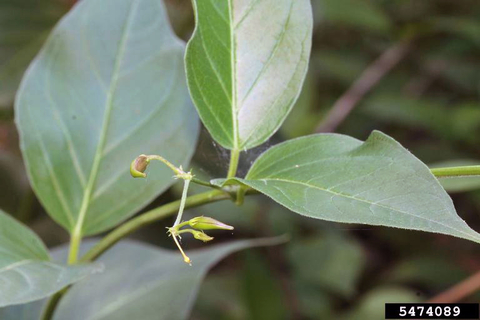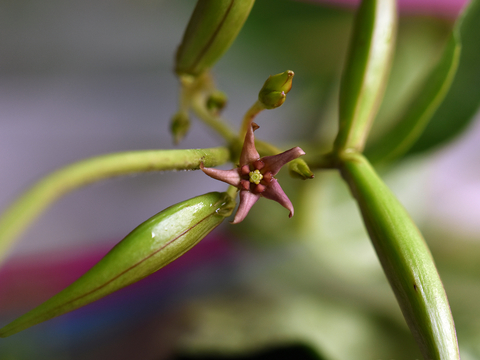Be on the lookout for pale swallow-wort, one of the newer noxious weeds in Minnesota.
A vining herbaceous plant originally from Russia and Ukraine, pale swallow-wort has smooth, green, oval or heart-shaped leaves with pointed tips and clusters of 6-10 reddish to brown 5-petaled flowers. A member of the milkweed family (Asclepidaceae), the plants produce pods containing flat brown seeds.
Pale swallow-wort plants have no rhizomes and grow in clumps with many stems. Pale swallow-wort (Cynanchum rossicum Kleopow syn. Vincetoxicum rossicum) is related to black swallow-wort (Cynanchum louiseae Kartesz & Gandhi). Both are listed as Prohibited Eradicate on the Minnesota Noxious Weed List due to their negative effects on the environment and toxic effects on beneficial insects and livestock if consumed.
Black swallow-wort was added to our noxious weed list in 2013 and pale swallow-wort in 2023 after assessment by the Minnesota Department of Agriculture Noxious Weed Advisory Committee. Both plants were first reported in 1891 in New York state and were most likely brought in as ornamental horticultural plants.
Toxic to monarch butterflies
Originally thought not to be hardy when previously assessed in 2012, pale swallow-wort colonies were discovered in Scott County in June 2021 by staff from the Minnesota Department of Natural Resources and Minnesota Department of Transportation staff. The plants had spread into adjacent areas where they were covering native vegetation, shading and ultimately killing it.
Pale swallow-wort is also toxic to many insect larvae. Being in the milkweed family, monarch butterflies may lay their eggs on it. The hatching larvae that feed on the toxic swallow-wort die. Swallow-wort roots contain chemicals that are toxic if consumed by livestock.
If you discover black or pale swallow-wort — or any plant you suspect to be a noxious weed — on your property or a public landscape, please report it to the Minnesota Department of Agriculture using the EDDMaps app or the Report a Pest webpage.
Find out more on the Department of Agriculture site.



